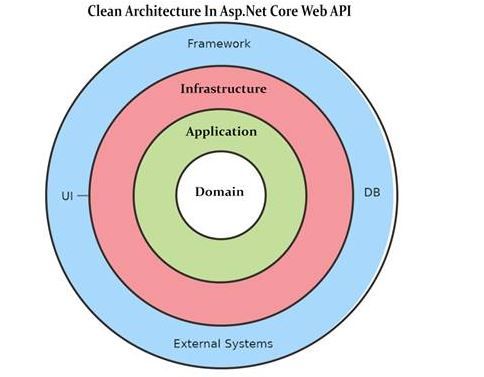Building Scalable and Maintainable Applications with Clean Architecture in C#
Clean Architecture is an architectural pattern that helps developers build software systems that are flexible, scalable, and easy to maintain. It separates concerns by organizing code into distinct layers, ensuring that the system's core business logic is independent of external dependencies like databases, frameworks, or user interfaces. In this blog, we'll explore the principles of Clean Architecture in C# and how to implement it in your projects.
Understanding Clean Architecture
Clean Architecture was introduced by Robert C. Martin (Uncle Bob) as a way to achieve independence from frameworks, databases, and user interfaces. The key principle is to create a system where the business rules are at the center, and everything else depends on them.
Key Concepts
Entities: These are the core business objects of the application. They encapsulate the most general and high-level rules of the system. Entities are independent of any external factors.
Use Cases (Interactors): These represent the application-specific business rules. Use cases orchestrate the flow of data to and from the entities, ensuring that the system behaves as required.
Interface Adapters: This layer acts as a mediator between the use cases and the external systems, such as databases, web services, or the user interface. It converts data between the format used by the use cases and the format required by the external systems.
Frameworks and Drivers: This is the outermost layer, consisting of external libraries, frameworks, and tools. It includes the UI, database, and any other external system. This layer should have no direct knowledge of the business rules.
Dependency Rule
One of the core principles of Clean Architecture is the Dependency Rule, which states that code dependencies can only point inward. This means that the inner layers should have no knowledge of the outer layers. This rule ensures that changes in the outer layers do not affect the core business logic.
Implementing Clean Architecture in C#
Let's walk through the implementation of Clean Architecture in a C# project.
Project Structure
A typical C# solution implementing Clean Architecture might be organized into the following projects:
Core:
- Entities: Contains the core business entities.
- Interfaces: Defines interfaces that the outer layers will implement.
- UseCases: Contains the application-specific business logic.
Infrastructure:
- Persistence: Contains implementations for data access, such as repositories.
- ExternalServices: Implementations for external services like APIs.
Application:
- DTOs: Data Transfer Objects used for passing data between layers.
- Services: Implements use cases using the interfaces defined in the Core layer.
UI:
- Controllers: Contains the web controllers or API endpoints.
- Views: Contains the UI views if it's an MVC application.
Advantages of Clean Architecture
- Testability: Since business logic is decoupled from external dependencies, unit testing becomes straightforward.
- Maintainability: The clear separation of concerns makes the codebase easier to understand and maintain.
- Scalability: The architecture is flexible, allowing you to add new features without affecting existing ones.
- Framework Independence: The core logic is independent of frameworks, making it easier to switch technologies or upgrade components.
Conclusion
Clean Architecture in C# is a powerful way to build scalable and maintainable applications. By following its principles, you can create systems that are easy to test, extend, and adapt to changing requirements. Implementing Clean Architecture might seem complex at first, but the benefits it brings to the long-term maintainability of your project are well worth the effort.

